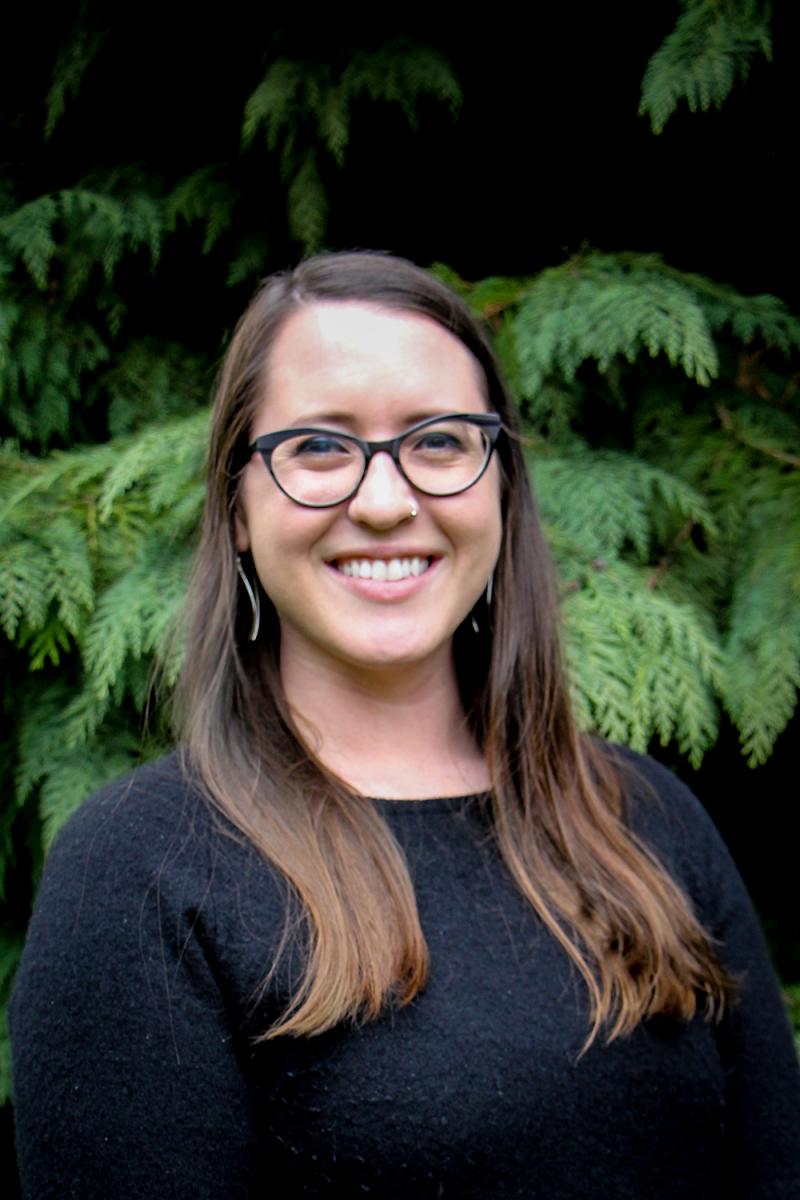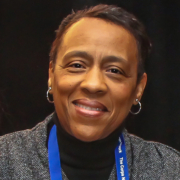
 As part of her studies at the University of Oregon, graduate student Jordan Katcher plans to create a toolkit that provides resources for increasing diversity, equity, and inclusion (D,E,I) within Conservation Corps programming. To do this, Jordan hopes to combine academic research with insights from the field.
As part of her studies at the University of Oregon, graduate student Jordan Katcher plans to create a toolkit that provides resources for increasing diversity, equity, and inclusion (D,E,I) within Conservation Corps programming. To do this, Jordan hopes to combine academic research with insights from the field.
During the summer of 2017, Jordan is traveling throughout the country to visit several Corps that operate identity-based programs (e.g. Veterans Crews, ASL Inclusion Crews, Native Youth Crews, LGBTQ Crews, All-Female Crews, etc.). She’ll be conducting interviews and gathering information about innovative and effective practices. The Corps Network is hosting a blog where Jordan will share her experiences.
By Jordan Katcher – submitted July 7, 2017
Background:
Hello all! My name is Jordan Katcher and I am a current Community & Regional Planning graduate student at the University of Oregon. For my master’s degree, I have the opportunity to complete a professional project of my own choosing; given my background serving with AmeriCorps and working for Conservation Legacy, I knew I wanted to focus my research on increasing diversity, equity, and inclusion (D,E,I) within the outdoors.
Coming from the Conservation Corps family, I know how difficult it can be to oversee program logistics while maintaining sustainable relationships with members, team leaders, community partners, and funders. It’s a lot to juggle, and being able to perform thorough program evaluations and share what’s happening throughout the larger network of Conservation Corps can also be a struggle, too.
Knowing the limitations that face Conservation Corps led me to think more about D, E, I practices within these organizations, especially as I started to learn more about “single identity-based crew” models. Throughout the country, several Conservation Corps have initiated single identity-based crews that not only create access for traditionally marginalized populations within the Conservation Corps world, but also integrate and share the identities of these members within the larger environmental movement.
Knowing about several single identity-based crews, such as the Utah Conservation Corps Disability Inclusion Crew, the Northwest Youth Corps American Sign Language Inclusion Crew, and the Idaho Conservation Corps All-Women Crew, led me to think more about how important these crews are and how crucial it is that the evolution of these crews be shared throughout the larger Conservation Corps network. I decided to create a toolkit that combines both on-the-ground experience as well as academic research centering on single identity-based crews.
Once I solidified my professional project scope, I partnered with The Corps Network to set up site visits with Conservation Corps across the country. I was also honored to speak with Aparna Rajagopal-Durbin and Ava Holliday from The Avarna Group (who recently published a blog post on the importance of supporting single identity spaces), who assisted me in creating a list of interview questions for each of these site visits.
Two weeks ago, I embarked on my first of three road trips this summer. My first road trip covered the upper Midwest region, where I had the honor of visiting: Montana Conservation Corps in Bozeman, MT; Conservation Corps Minnesota & Iowa in St. Paul, MN; and SEEDS Youth Conservation Corps in Traverse City, MI. My second road trip will focus on the Northeast region, and my third will focus on the Southwest region. For each of these trips, I’ll be guest blogging for The Corps Network, and sharing bits of my findings with all of you. I want these blog posts to serve as a catalyst for ongoing conversation related to D,E,I initiatives, so definitely reach out to these conservation corps to keep the conversations going!
Visits in the Midwest:
Montana Conservation Corps (MCC) Site Visit – Bozeman, Montana
MCC implements single identity-based crews for Native American youth and veterans. Both of these programs formed out of funding opportunities that came up in the past. For MCC, initiating and supporting these crews takes a great amount of work, but, if you qualify the assets and opportunities of these crews, it’s an incredibly important part of their D,E,I goals and objectives. These programs offer so much value to program participants and staff, and MCC highly values the new perspectives that come from these crews.
For their veterans crew, MCC invested in a number of resources for their members, including paying veterans a higher stipend ($150 more each paycheck), providing housing, offering a scholarship program, and giving actual certification for post-service job opportunities. For their initiatives with Native American youth, MCC would like to eventually create an advisory committee of Native American youth that would involve members, alumni, and partners deciding what crews need and want for their crew experiences. MCC has also been able to implement increased resources for their single identity-based crews through The Kendeda Fund.
For MCC, they would like to define the success of their crews from more of a quality than a quantity standpoint. One of their questions is, “outside of numbers, how do we tell the stories of these programs to funders?” Additionally, what recruitment and retention strategies are there for single identity-based crews?
Conservation Corps Minnesota & Iowa (CCMI) Site Visit – St. Paul, Minnesota
CCMI implements a Native American crew, called Restoring Relations, which began in the summer of 2015 in partnership with local community stakeholders. Additionally, while CCMI does not run a single identity-based American Sign Language Inclusion (ASL) Crew, they do provide many opportunities to ASL crew members within their existing crews.
The Restoring Relations Crew evolved out of CCMI asking how they can change their program models and their assumptions to genuinely provide worthwhile opportunities for Native American youth. CCMI hopes that, through Restoring Relations, there is a space for Native American youth to dive into nature through their own identity and history; this starts from in the very beginning of the program when, during training, crew members take a trip down the Mississippi River in traditional boats.
Like MCC, CCMI wants to strengthen more relationships with Native American leaders and have more voices at the table. Currently, their program is based in the Twin Cities, but they’re thinking about expanding in northern Minnesota once they reach capacity.
With Restoring Relations, CCMI provides time for smudging in the morning. The Corps really focuses on reflection across the board, working with crew leaders to decide what kind of reflection activities make the most sense. CCMI strives to be flexible and ready to listen in order to understand what may or may not work for the crew each year.
For CCMI, they would like more resources to educate their staff to feel more knowledgeable about multiple historical narratives of the land, places, and people that they’re working with. They’d also like to know more about recruitment and retention strategies, as well as ways to talk with staff, crew members, and youth about identities within the outdoor environment.
SEEDS Youth Conservation Corps (SEEDS) Visit – Traverse City, Michigan
SEEDS noticed that the majority of their crew members were male. In response, they decided to launch an all-women crew, called GURLS Corps (Girls United in Resilience, Leadership and Service), in hopes that this initiative would integrate more females into their organization. All the crew members identified as female and came from the foster care system.
Since SEEDS knew many of these crew members had difficult pasts, they wanted to invest in a well-trained, considerate, and understanding team leader, so they hired a woman with experience as an after-school educator. The crew model allowed for crew members to organically share stories about their foster care experiences and connect with one another. The focus of the program was not only about job experience, but also about providing an opportunity for female crew members to be in a healthy environment.
SEEDS also partners with local tribes for crew model development. Local tribes assist in recruitment and provide half the funding for the initiatives. SEEDS provides the training and materials needed for the service experiences.
Most of SEEDS’ single identity-based crew initiatives, whether focused on female, Native American, or foster care identities, form out of their partnerships with social services, schools, family courts, and tribes. SEEDS is also very conscious about how they approach their crew experiences; they’ve invested in a holistic approach that focuses on integration between social and ecological aspects (including all species).
For SEEDS, they would like resources on understanding the respective benefits of integrated and single identity-based spaces; what unique experiences come from each model, and how do you decide on one model or the other? They’d also like to see stories on how other Conservation Corps approach the work they need to do with an ecological, social, and/or STEM focus; how are Corps integrating STEM into their every day practices? Additionally, SEEDS is interested in comparing price points for their crew expenses; how much are Corps spending on training, uniforms, and supplies?
Thank you for reading! Stay tuned for my next blog post in a few weeks. If you have any questions about my research, have D, E, I resources that have worked for your crews, or would like to set up a potential site visit, please reach out to me via email at jkatcher@uoregon.edu.


































































